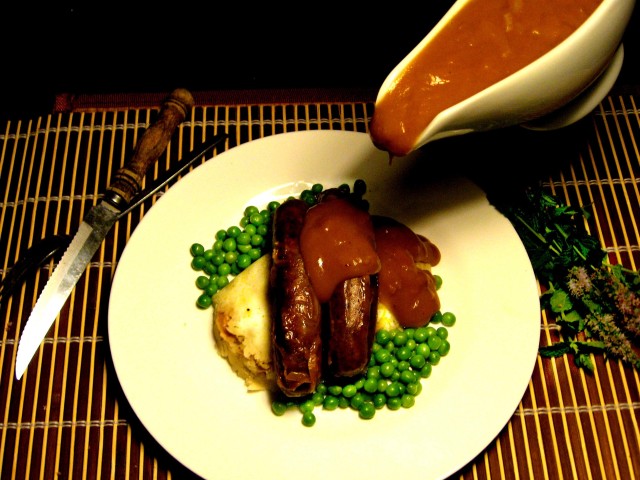
his sauce under different conditions could have been called just a condiment and not a real sauce. Well it is a sauce, but it is one of those sauces that does not share anything with the actual food, and as we will see further on, it is a sauce that requires a lot of preparation and usually is made in huge quantities.
If you know french, or if you can guess Espagnole means spanish. But the actual sauce has little connection with Spanish cuisine. According to Louis Diat, the creator of vichyssoise and the author of the classic Gourmet’s Basic French Cookbook: “There is a story that explains why the most important basic brown sauce in French cuisine is called sauce espagnole, or Spanish sauce. According to the story, the Spanish cooks of Louis XIII’s bride, Anne, helped to prepare their wedding feast, and insisted upon improving the rich brown sauce of France with Spanish tomatoes. This new sauce was an instant success, and was gratefully named in honor of its creators.”
Before we continue, I would like t say that I have never made espagnole, because it is a very tedious and elaborate sauce. It is however very tasty and really brights up the dishes. Espagnole has a strong taste and is rarely used directly on food. The sauce is used in small quantities to give contrast between the different bites of food, and therefore highlight its flavor. Using even a little more than the required can overpower the taste of the target food and therefore you should be very cautious.
The foundation of the sauce is the roux the butter and flour mixture that we see in béchamel and almost in velouté sauce. A great difference here is the dark roux that is used. The dark roux although weak in thickening, it provides a very deep dark flavor that makes for strong nutty taste. To the roux we add big amounts of veal stock. For 2 cups of roux (1 butter and 1 flour) we add 2 gallons of veal stock. So so far it is a mix of the béchamel (the roux) and the velouté. The fun part is now starting. To the mix we add veal bones that have been browned in the oven alongside with vegetables (not starchy veggies, just carrots onions a celery). The mix is cooked over simmer, traditionally for hours (at least 3), where other chefs report up to days. To maintain the solution with enough liquid, periodically veal stock is added.
The last step is to strain the sauce in another pot and keep on the cooking. This time tomato sauce that has been pureed is added and the reduction continuous till the sauce reach the desired consistency. A typical espagnole recipe takes many hours or even several days to make, and produces four to five quarts of sauce. In most derivative recipes, however, one cup of espagnole is more than enough, so that the basic recipe will yield enough sauce for 16 to 20 meals. Frozen in small quantities, espagnole will keep practically indefinitely.
As a mother sauce, however, it then serves as the starting point for many derivative sauces, such as Sauce Africaine, Sauce Bigarade, Sauce Bourguignonne, Sauce aux Champignons, Sauce Charcutiere, Sauce Chasseur, and Sauce Chevreuil, just to go as far as the “Cs”. There are hundreds of other derivatives in the classic French repertoire.
Are you going to make an espagnole sauce? I doubt it. But it is a sauce that requires patient and skill, the two qualities that the French people have. But it is a good exercise. Then you will appreciate it more next time you will have it.







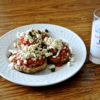
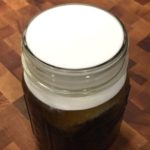

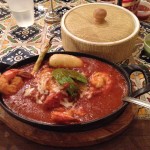
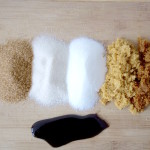
Leave a Reply